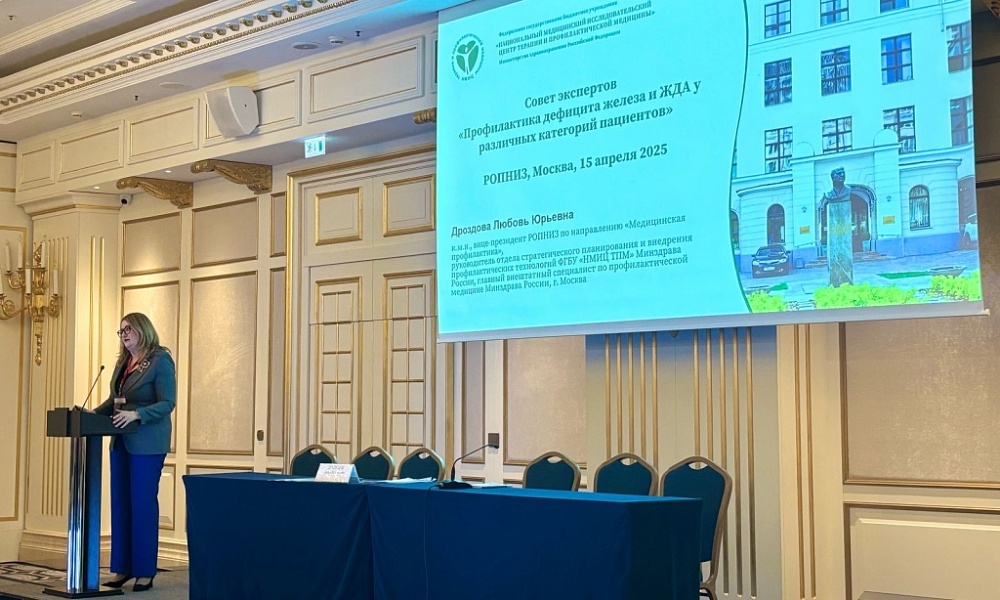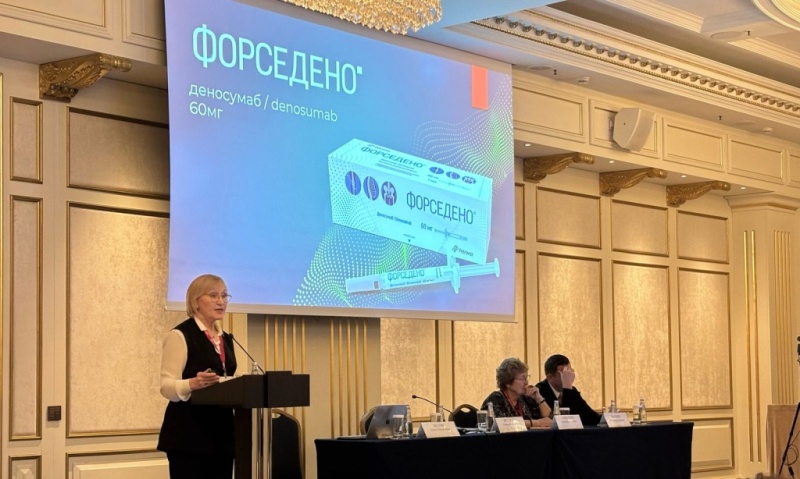
Board of Experts: iron deficiency anemia is a hidden danger for women and the elderly

Moscow, April 2025. — The Board of Experts gathered at the Man and Medicine Congress on April 15 to discuss the options that could be used to prevent iron deficiency anemia (IDA) in different categories of patients and the relevant efficient measures urgently needed. This is the first extensive and comprehensive discussion held to tackle this serious issue. The Board of Experts included specialists in internal medicine, geriatrics, hematology, gastroenterology, obstetrics and gynecology, dietetics, preventive medicine and clinical pharmacology.
The main takeaway is that there are far more people who need iron deficiency prevention than we usually assume. The participants of the Board of Experts proposed to expand the list of risk groups who can potentially develop iron deficiency anemia and to revise the existing approaches to the prevention and treatment of IDA using modern forms of iron that are well tolerated by patients.
Iron deficiency anemia is one of the most common diseases in the world[1]. According to the Federal State Statistics Service, 1.5 million people were diagnosed with this disease in 2021[2]. People of all sexes and ages can suffer from this condition, but women of childbearing age, pregnant women, the elderly, and patients suffering from gastroenterological problems that increase the risk of gastrointestinal bleeding are at a greater risk of developing iron deficiency and IDA.
The experts focused, in particularly, on women of childbearing age in whom anemia is a quite common[1]. The risk of its occurrence increases in those who suffer from heavy and abnormal uterine bleeding, with anemia being detected in one out of two of such women[3].
As a person ages, the incidence of anemia also rises regardless of sex. It has been shown[4] that this risk increases by 4% annually in the elderly.
The reasons for IDA to be quite common stem not only from physiological factors, the problem here also is in lifestyle. An unbalanced diet, popular restrictive diets, especially among women, and a lack of public awareness of the symptoms and risks of iron deficiency aggravate the situation.
According to the current clinical guidelines on iron deficiency, adults at risk of developing iron deficiency are prescribed preventive administration of iron products at a dosage of 30-60 mg daily or every other day under control of serum iron metabolism parameters.
The Board of Experts also stressed the importance of establishing a clear algorithm of how to detect and prevent iron deficiency in different categories of patients.
Adverse events and poor tolerance of iron products present another problem faced by patients with IDA.
The use of dietary supplements containing lower doses of iron with high bioavailability due to its chelate form may be a justified strategy selected to prevent iron deficiency in various categories of patients.
The comprehensive measures proposed will allow physicians to detect IDA in time, prevent its development and reduce the burden of this significant social issue.
1Iron deficiency anemia. Clinical Guidelines. https://npngo.ru/uploads/media_document/960/e21d85ce-ed33-468a-b64c-72763476c2a1.pdf
2Healthcare in Russia. 2022: Statistical Digest. М.: Federal State Statistics Service. 2022
3WHO. https://www.who.int/data/gho/data/indicators/indicator-details/GHO/prevalence-of-anaemia-in-women-of-reproductive-age-(-)
4N. O. Khovasova, N. M. Vorobyeva, O. N. Tkacheva. Yu. V. Kotovskaya, A. V. Naumov, E. V. Selezneva, L. N. Ovcharova. Prevalence of anemia and its associations with other geriatric syndromes in persons over 65 years of age: data from the EVKALIPT Russian epidemiological study. Therapeutic Archive. 2022;94(1):24–31. DOI: 10.26442/00403660.2022.01.201316
5O. Pineda, H D Ashmead Effectiveness of treatment of iron-deficiency anemia in infants and young children with ferrous bis-glycinate chelate. Nutrition. 2001 May;17(5):381-4. doi: 10.1016/s0899-9007(01)00519-6
6Ahmed M Abbas et al. Efficacy of ferrous bis-glycinate versus ferrous glycine sulfate in the treatment of iron deficiency anemia with pregnancy: a randomized double-blind clinical trial. J Matern Fetal Neonatal Med. 2019 Dec;32(24):4139-4145. doi: 10.1080/14767058.2018.1482871
New stage in treating osteoporosis and osteoarthritis — state-of-the art therapeutic approach


